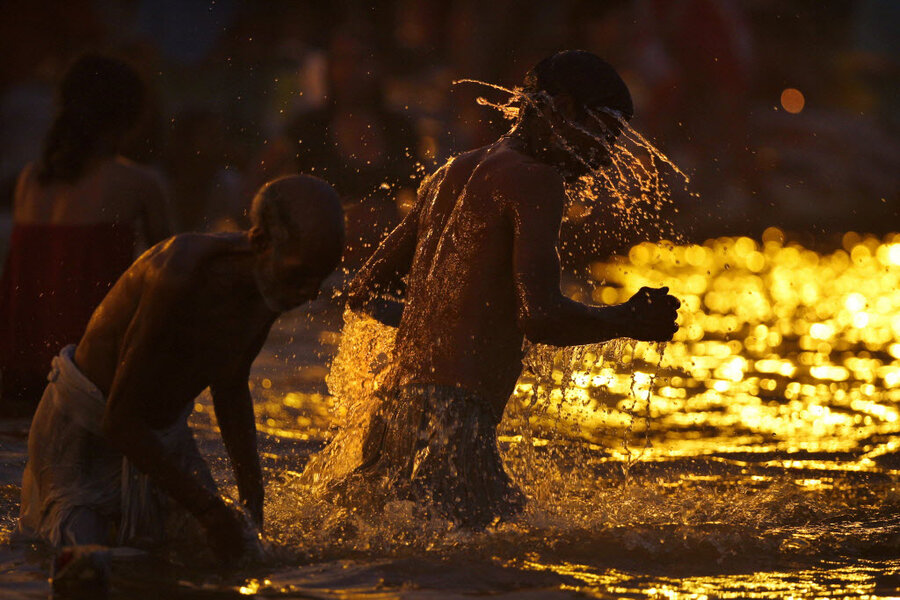10 killed in stampede during India's holy Hindu festival, Kumbh Mela
Loading...
| Allahabad, India
At least 10 people were killed and a dozen more injured Sunday after a stampede broke out at a train station in the northern Indian town where millions of devout Hindus gathered for a religious festival, a senior government minister said.
Pawan Bansal, India's Railway Minister, told reporters that the stampede took place as massive crowds flooded the Allahabad train station on Sunday evening.
At least two television channels, NDTV and CNN-IBN said as many as 20 people were feared dead and 30 others injured. News reports said the large crowds caused a section of a footbridge at the station to collapse leading to the accident.
News reports said tens of thousands of people were at the train station at the time. Television showed large crowds pushing and jostling at the train station as policemen struggled to restore order.
"There was complete chaos. There was no doctor or ambulance for at least two hours after the accident," an eyewitness told NDTV news channel.
An estimated 30 million devotees were expected to take a dip at the Sangam, the confluence of three rivers — the Ganges, the Yamuna and the mythical Saraswati — on Sunday, one of the holiest bathing days of the Kumbh Mela, or Pitcher Festival. The festival lasts 55 days and is one of the world's largest religious gatherings.
The auspicious bathing days are decided by the alignment of stars, and devout Hindus believe a dip in the sacred river on one of these days will wash away their sins and free them from the cycle of death and rebirth.
The festival brings together millions of devout worshipers and thousands of religious leaders and ascetics.
The most dramatic feature of the festival is the Naga sadhus — ascetics with ash rubbed all over their bodies, wearing only marigold garlands — leaping joyfully into the holy waters.
According to Hindu mythology, the Kumbh Mela celebrates the victory of gods over demons in a furious battle over nectar that would give them immortality. As one of the gods fled with a pitcher of the nectar across the skies, it spilled on four Indian towns_Allahabad, Nasik, Ujjain and Haridwar.
The Kumbh Mela is held four times every 12 years in those towns. Hindus believe that sins accumulated in past and current lives require them to continue the cycle of death and rebirth until they are cleansed. If they bathe at the Ganges on the most auspicious day of the festival, believers say they can rid themselves of their sins.
Associated Press writer Biswajeet Banerjee contributed to this report.







